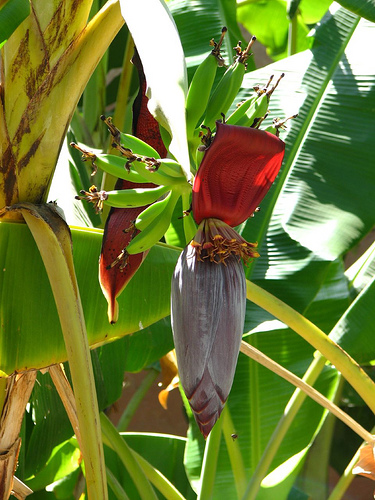Posts tagged ‘fruit’
Square Watermelons are Smarter Than Round Ones
By Chad Upton | Editor
How much is your fridge space worth?
Traditional watermelons take up a lot of space in your fridge. So, farmers in Japan came up with a way to grow square watermelons.
Square watermelons are a better use of space in your fridge and during shipping. When you pack them together there isn’t as much “empty” space in the corners. They’re also more convenient because they don’t roll over, they stand on their own.
From a practical standpoint, they’re definitely better. But, are they worth the money? In Japan, they go for the equivalent of about $82 USD. These watermelons are available in some US specialty grocery shops as well. These Panama imports are going for $75 and up.
If you want square watermelons without the obtuse price, you might consider growing your own. You can do it just like the Japanese farmers if you pickup a polycarbonate mold to grow them in. Basically, you fit the case around the watermelon as it starts growing and the watermelon grows to fill the shape of the case. The case runs for about $110 USD, but you can use it to grow many watermelons. Once you’ve grown two, you’ve more than paid for it.
Broken Secrets | Facebook | Twitter | Email | Kindle
Photo: solution_63 (cc)
Sources: CNN, slashfood, snopes, square-watermelons.com
The Banana Plant is an Herb
By Kaye Nemec
We’ve learned about the importance of fruits and veggies on the food pyramid since grade school. We’ve learned that carrots, peas and broccoli are vegetables and apples, pears and strawberries are fruits.
But most of us probably haven’t learned that the banana plant is an herb or that tomatoes, avocadoes, string beans, squash, eggplant, green pepper, okra, green beans, cucumbers and corn kernels are fruits.
Merriam-Webster defines an herb as “a seed-producing annual, biennial, or perennial that does not develop persistent woody tissue but dies down at the end of a growing season.”
Banana plants do not have the typical wood trunk that supports a tree. Its leaves twist and turn around each other to form a stem that can be 12 inches thick and can grow up to 40 feet tall. At the end of each harvest the plants die completely and grow again the next season. The bananas produced by the plant are the fruit of the herb.
A fruit is defined in the botanical world as the part of the plant that bears the seed – therefore putting tomatoes, cucumbers, avocados, green peppers and more in the fruit category.
In the legal world, however, vegetables as we know them remain as is – all fruit classifications thrown aside. In the 19th century the U.S. Supreme Court ruled that fruits and vegetables were to be classified according to how they are commonly consumed.
Broken Secrets
Get updates from: Facebook | Twitter | Email | Kindle
Photo: Spacemonster
Sources: Merriam-Webster, OChef, Live Science, MyPyramid.gov
Peanuts Are Not Actually Nuts
Sorry, this is not about Charlie Brown. I’m talking about the peanuts that some of us love to eat and others are deathly allergic to. Those peanuts are seeds and they belong to the legume family, along with beans, peas, alfalfa, lentils and others.
In fact, many things we typically consider nuts, do not meet the botanical definition of a nut. Try to pick out the non-nuts from this list:
- Almonds
- Brazil Nuts
- Cashews
- Coconuts
- Macadamia Nuts
- Pine Nuts
- Pistachios
- Walnuts
You probably guessed that coconuts are not actually nuts, and you’re right. If you guessed any of the others are not nuts, you’re right too — none of them are real nuts!
A nut is a hard shelled fruit that comes from a plant whose fruit does not open to release its seed. A nut is a composite of the fruit and seed, some examples of true nuts are: acorns, beechnuts, chestnuts and hazelnuts.
Some people avoid nuts because they are high in fat, but that’s actually the reason nuts are such a nutritious fruit. The Omega 3 fatty acids in nuts are believed to lower lipid levels (the “bad cholesterol”). Nuts also contain linoleic and linolenic acids, which are important for healthy growth, hair, skin, blood pressure, and immunological response. They are also rich in protein, folate, fiber, magnesium, phosphorus, potassium, copper and selenium.
So, if you’ve been avoiding them, forget about it!
Go nuts.
Broken Secrets
Written By: Chad Upton
[available on Kindle]
.
Sources: Nuts, Dehiscence






